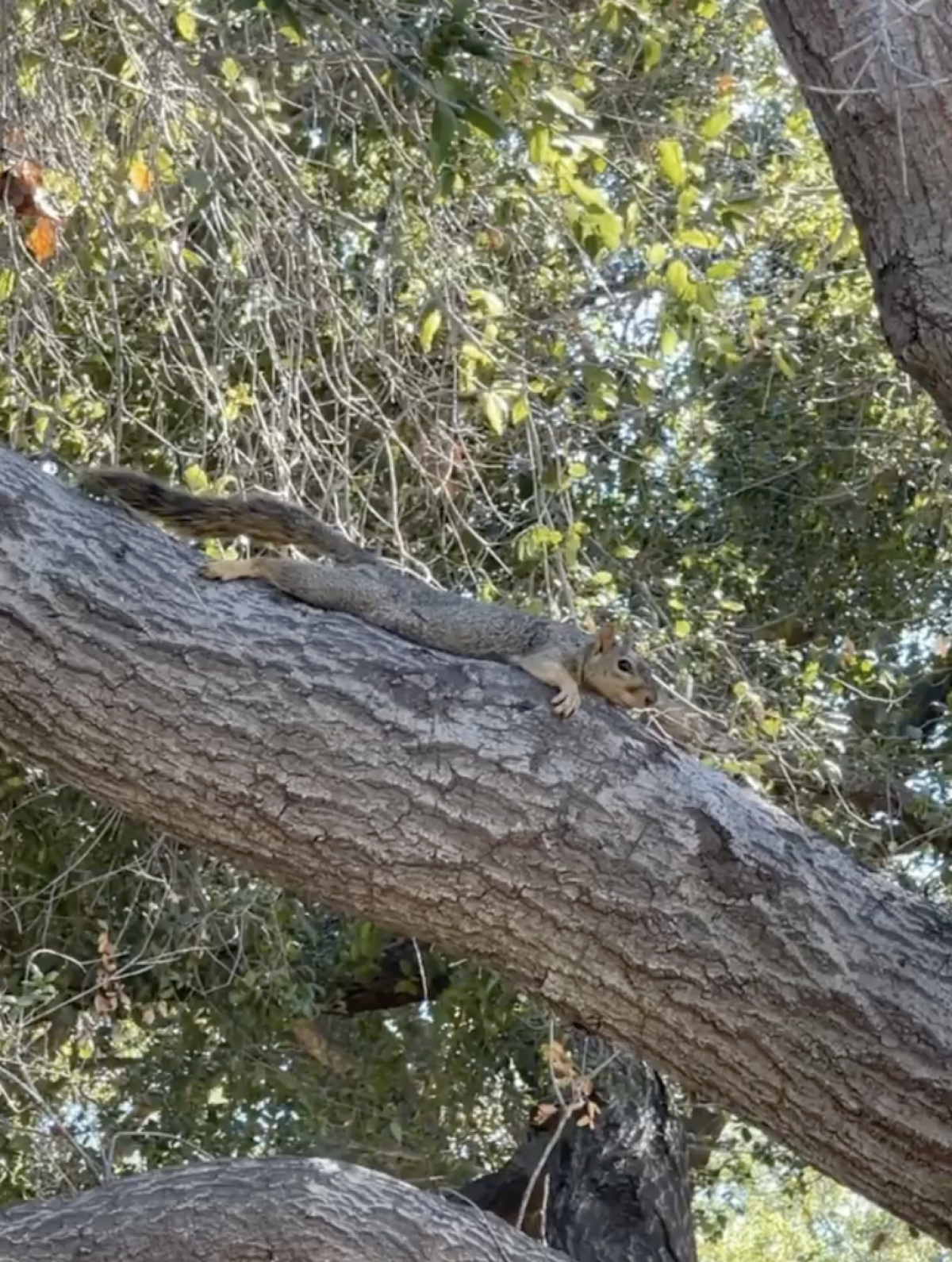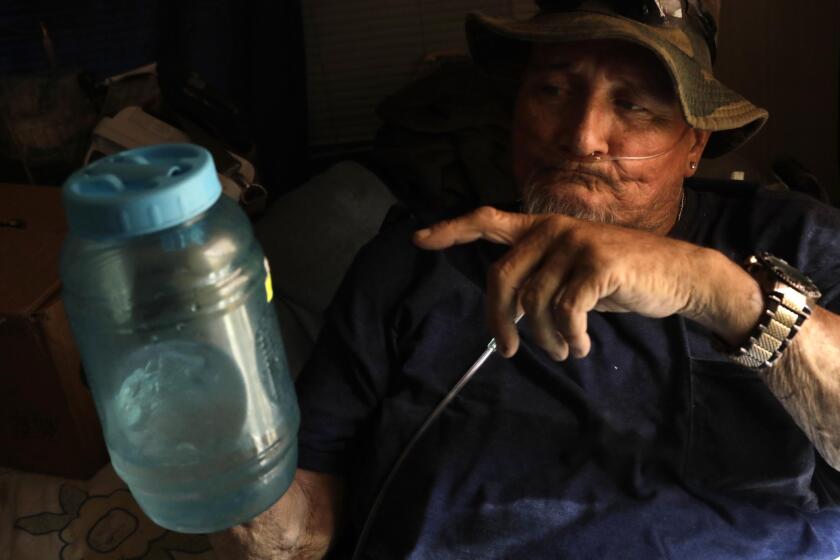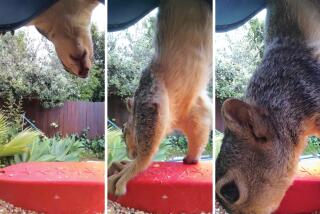Don’t worry about that squirrel ‘splooting’ — it’s just trying to beat the heat

- Share via
Last week, during California’s worst September heat wave on record, Akvile DeFazio noticed the squirrels in her La Verne neighborhood acting weird: “just plastered on the sidewalk,” she said, not moving.
“It was just really bizarre behavior I hadn’t seen before,” DeFazio said. “I’ve seen squirrels all of my life, and I’ve never seen squirrels splat down like that.”
At first, she said, she worried they could be sick, so she kept her distance. But a few days later while scrolling Twitter, she saw an article about the phenomenon that’s become known as “splooting,” a way squirrels and some other animals sprawl out to stay cool when temperatures rise.
“Bears do it, squirrels do it, rabbits do it, dogs [too],” said Daniel Blumstein, a professor at UCLA’s Department of Ecology and Evolutionary Biology. “They get really flat when they’re trying to shed heat.”
People across California became fascinated by squirrels “splooting” during the unprecedented heat wave, sharing pictures and videos online of the animals on sidewalks or backyard patios.
And recent interest in the rodents’ behavior has spanned coasts and cities this summer, spurring social media PSAs from the New York City Parks Department, the governor of Colorado and the National Park Service, which shared images of bears and tortoises in the “spread-eagle” position.
Alison Hermance, a spokesperson for Wildcare Wildlife Hospital in San Rafael, said that throughout the heat wave, the facility received an uptick in concerned calls about squirrels “lying flat on their bellies.”
“That’s not a cause for medical concern for an adult squirrel,” Hermance said. “It’s a cooling behavior, it’s a relaxation behavior.”
Trees provide koalas with more than food and shelter – they also serve as air conditioners, scientists say.
She called it an “adorable behavior” that many people might recognize from their dogs sprawling out, maybe on a cool tile floor.
“To access something cool on the belly, you see a lot of animals kind of do that,” Hermance said. She said that part of the body for squirrels and dogs has a little less fur and a lot of blood vessels, making it easy to more quickly cool.
Selena Vidya, who lives in Sherman Oaks, now calls herself an “amateur squirrel splooter spotter” after learning the term this summer.
“I honestly thought they were sunbathing for the longest time until I learned what it was,” she said.
Some scientists call the practice “heat dumping,” and though it’s not exactly clear from where the term “sploot” came, Blumstein thinks it might be tied to Corgis, which are often seen sprawling out.
“That’s where I learned the word,” Blumstein said of his dog. “A lot of mammals have less fur on their bellies; by getting flat on a rock, they can get the coolness of the rock … transferred to their bodies.”
Denys Hemen, hospital manager at the California Wildlife Center in Malibu, said that while humans stay inside during extreme heat, many animals, such as squirrels, sprawl out.
Read all of our coverage about how California is neglecting the climate threat posed by extreme heat.
“We’re all hot, we’re all heat dumping — animals do it too,” Hemen said.
Though adult squirrels’ splooting isn’t cause for concern, Hemen said baby squirrels often struggle in the heat, but for different reasons.
He said his center got “an enormous number of calls about baby squirrels found on the ground” during the heat wave, probably because they got too hot in their nests, tried to get out and fell.
Hermance said her wildlife hospital in Northern California had the same issue.
“It’s really, really bad. We are getting groups of squirrels coming in if the whole nest falls,” Hermance said.
People often find them on the ground, she said, and depending on how long they were there, they could have “incredible heat exposure,” or hyperthermia. Most are able to recover, she said, but the recent record-breaking temperatures make things more difficult.
And with the funny word and adorable photos going viral on social media, Blumstein said it’s as good a time as ever to have people take climate change seriously, noting how many animals have already died in extreme temperatures.
“While this is cute, it’s also a wake-up call that human-induced climate change — these heat events — are really tough on wildlife,” Blumstein said. “Without air conditioning, people face serious problems, and the wildlife that can’t escape [the extreme heat] face serious problems as well.”
More to Read
Sign up for Essential California
The most important California stories and recommendations in your inbox every morning.
You may occasionally receive promotional content from the Los Angeles Times.











